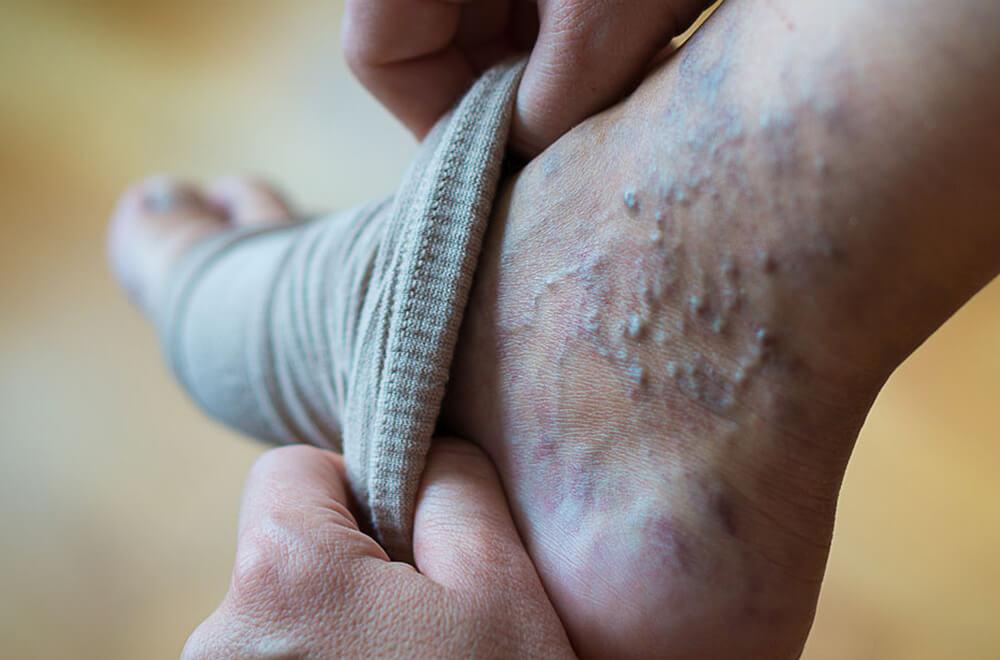Signs to watch day-to-day
Furthermore, in daily life, you can watch for subtle changes. For example, if you notice visible cords or mild bulging after a long day, this may be one of the early signs of varicose veins. Likewise, if you feel a new, regular heaviness in one or both legs, note it and consider monitoring. If standing for work causes more aching than before, it could be an early sign and should prompt a simple self-check. Track any recurring localised itching or burning, because these small signals often precede larger visible changes.
When symptoms suggest complications
However, not all early signs are harmless. If you see persistent swelling, skin redness, increasing warmth, or open sores, then act quickly. These symptoms may suggest worsening venous disease or complications such as ulcers or superficial clotting. Therefore, if an area becomes warm, very painful, or hard to touch, seek medical advice. Moreover, sudden calf pain and swelling can indicate deep vein thrombosis, which requires urgent evaluation. In short, recognise red flags and do not delay medical review.
Practical tips for everyday care
To be practical, establish small habits that support vein health. For instance, shift weight frequently when standing and take short walking breaks when sitting for long spells. Frequently flex your ankles while seated; these movements help pump blood back to the heart. When travelling or working at a desk, schedule short walking breaks. Wear graduated compression stockings if a clinician recommends them.
Also, maintain a healthy weight and adopt regular cardio exercise like walking, cycling, or swimming. Finally, avoid very tight clothes around the waist and legs, and cut down on smoking because it harms vascular health. These steps ease symptoms and slow the progression of this condition.
When to see a doctor
See your GP if symptoms affect sleep or daily life, if swelling persists, or if skin changes develop. Also, seek help for sudden pain, redness, or a hard cord-like vein; these may signal thrombophlebitis. Your clinician can perform a physical exam and, if needed, an ultrasound to check blood flow and valve function. Consequently, prompt evaluation clarifies diagnosis and avoids complications.
Medical treatments for varicose veins
If self-care fails, several effective treatments exist. For small to medium veins, sclerotherapy injects a solution that scars and closes the vein. For larger vessels, endovenous laser or radiofrequency ablation seals the faulty vein from within. In some cases, surgical removal remains an option. Importantly, treatment choice depends on vein size, symptoms, and personal health. Therefore, discuss the best option with a vascular specialist or vein clinic team.
Preventing Progression
To reduce the chance of worsening of this condition, remain active and manage weight. Additionally, use compression stockings if recommended and vary sitting or standing routines. Eat a fibre-rich diet to avoid constipation, which can increase venous pressure. Avoid long periods in high heels. By contrast, quit smoking and manage long-term health conditions. These steps lower the risk of progression from early findings to more severe venous disease.
Conclusion
In short, early recognition of the early signs of varicose veins gives you options. Therefore, notice bulging vessels, heaviness, itching, or changes in the ankles. Moreover, act with sensible self-care and seek medical review when needed. Finally, understanding the cause of varicose veins and how it starts helps you make informed choices for proper vascular health.
Hotline: 03311110397wa.me/+923302963300 | wa.me/+923312597322
Dr. Imtiaz Ahmad
FAQs
Q: What are the earliest symptoms I should notice?
A: The earliest signs often include mild aching, heaviness, small spider veins, and slight ankle swelling. These are common varicose veins early symptoms.
Q: How do varicose veins start in younger people?
A: Younger people can develop valve weakness from genetics, injury, or lifestyle factors. Thus, the start may be similar across ages, though the risk rises with age.
Q: Can lifestyle changes reverse early stage varicose veins?
A: While lifestyle changes rarely reverse visible veins completely, they often reduce symptoms and slow progression. Additionally, early intervention increases non-surgical success.
Q: What is the cause of varicose veins during pregnancy?
A: Pregnancy raises blood volume and hormone levels. Consequently, these changes increase pressure on leg blood vessels and can cause varicose veins. Often, symptoms improve after delivery.
Q: When should I get medical treatment?
A: Seek treatment if pain, swelling, skin colour changes, or ulcers occur. Also, if cosmetic concerns affect well-being, discuss options with your clinician.

